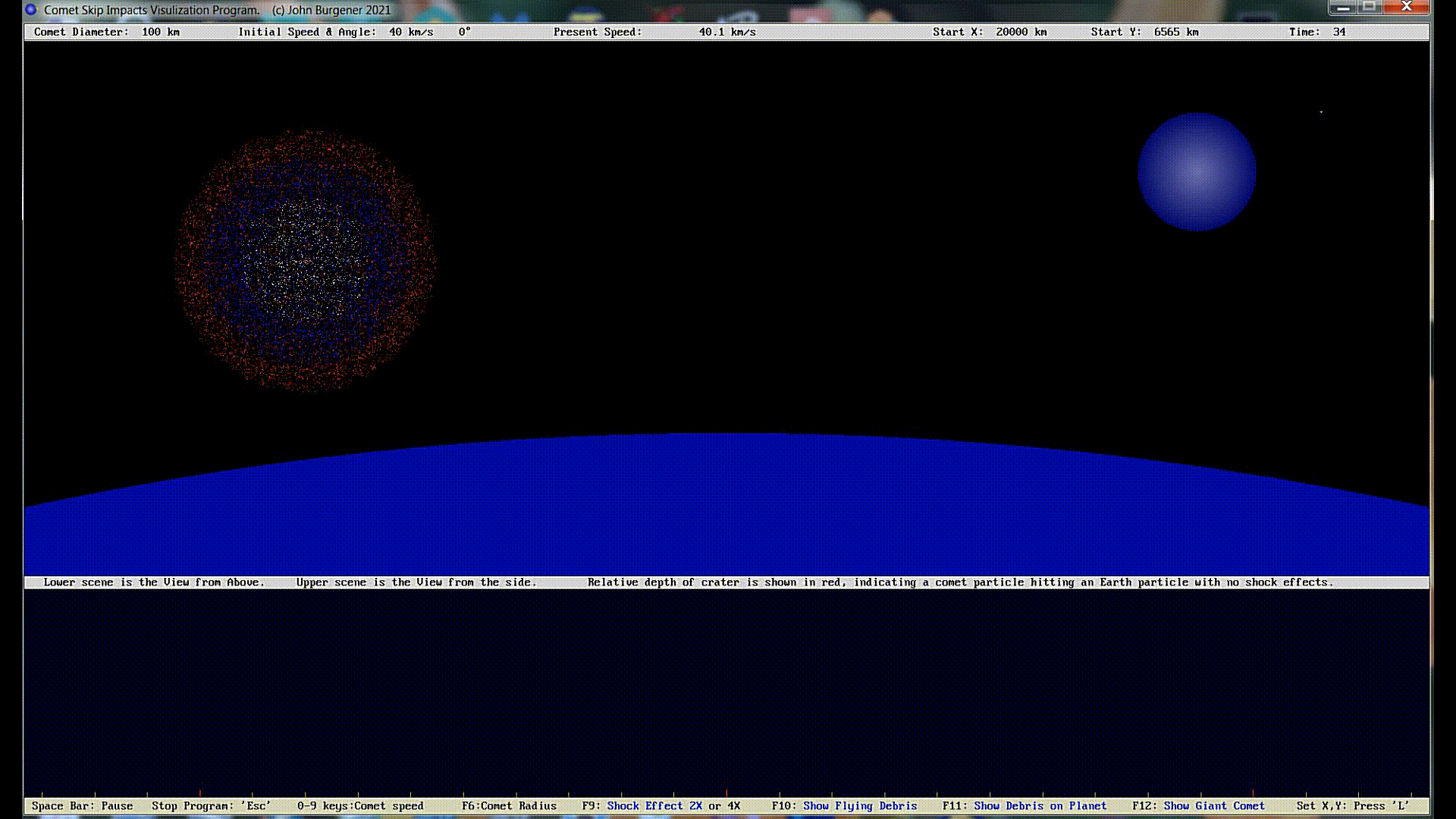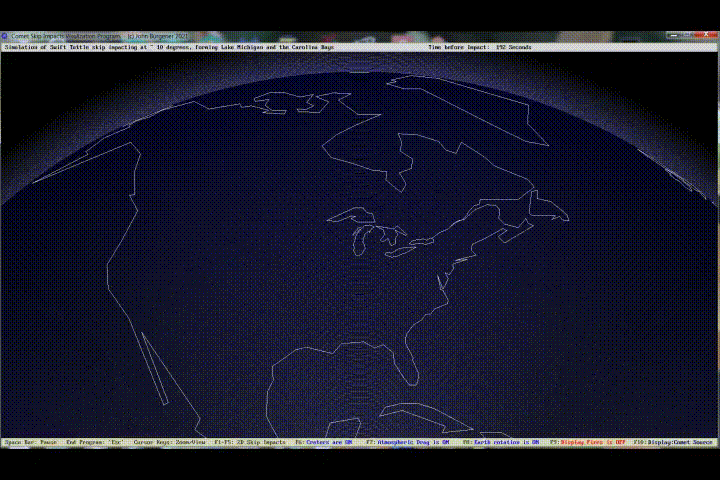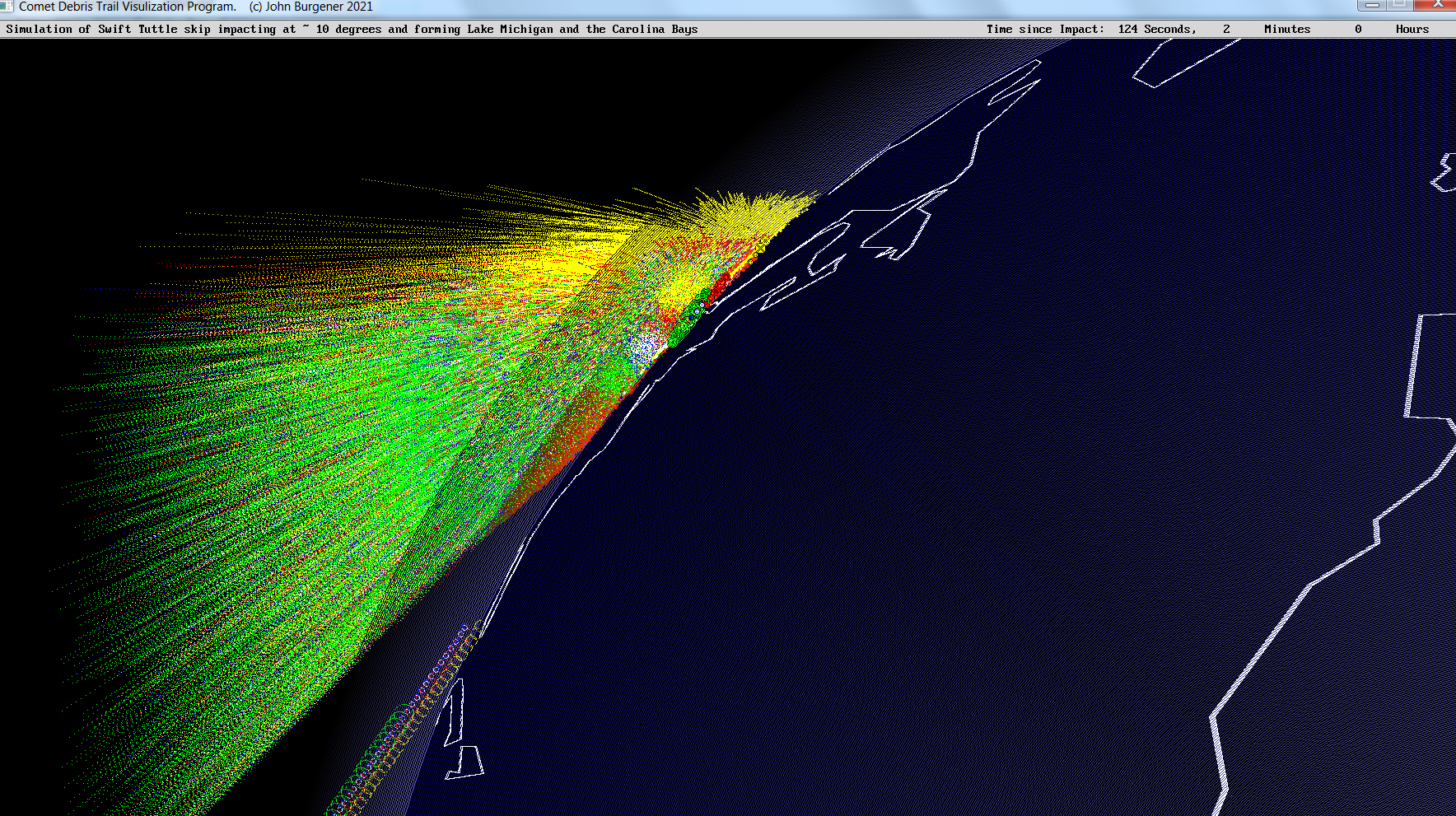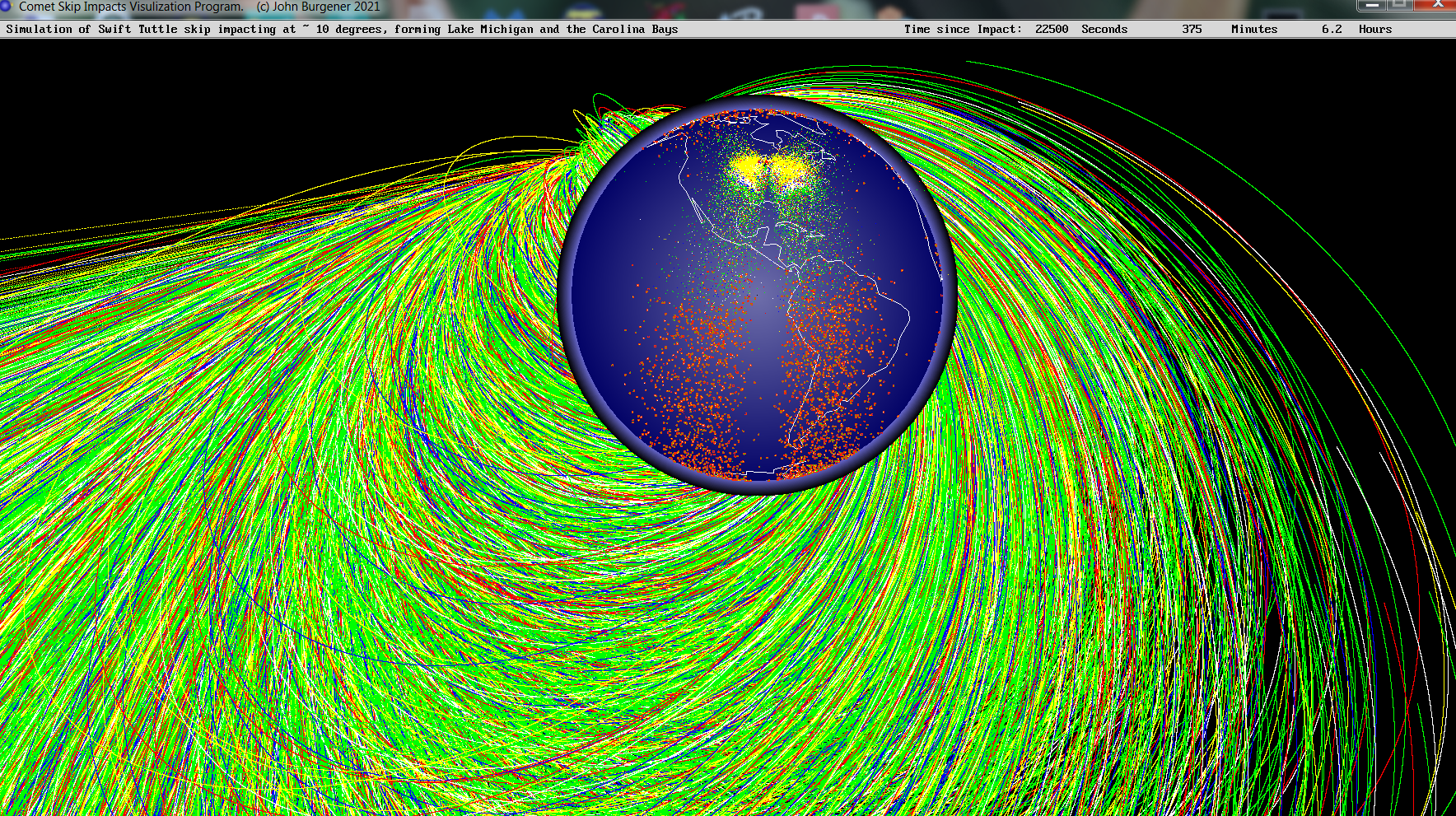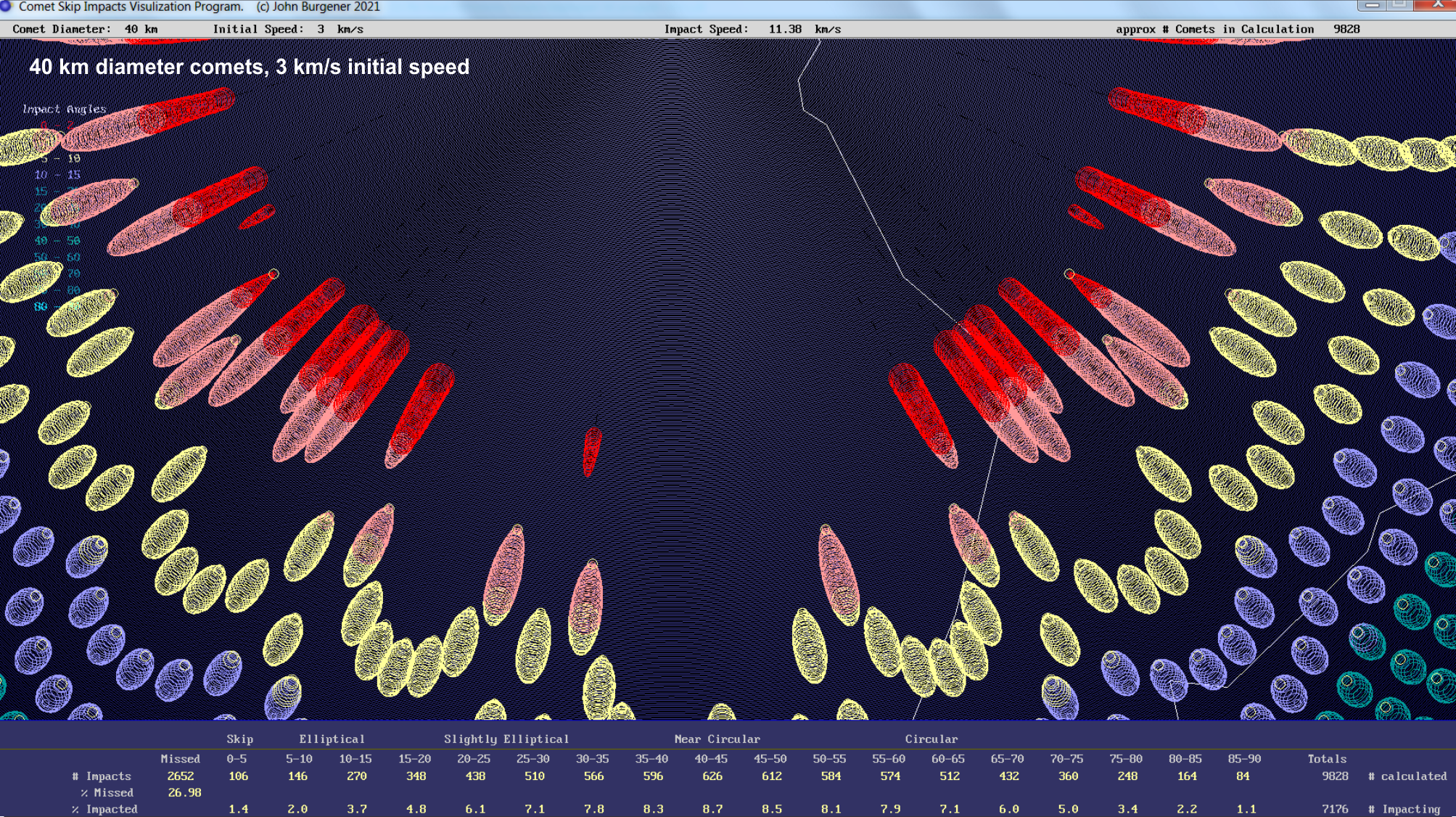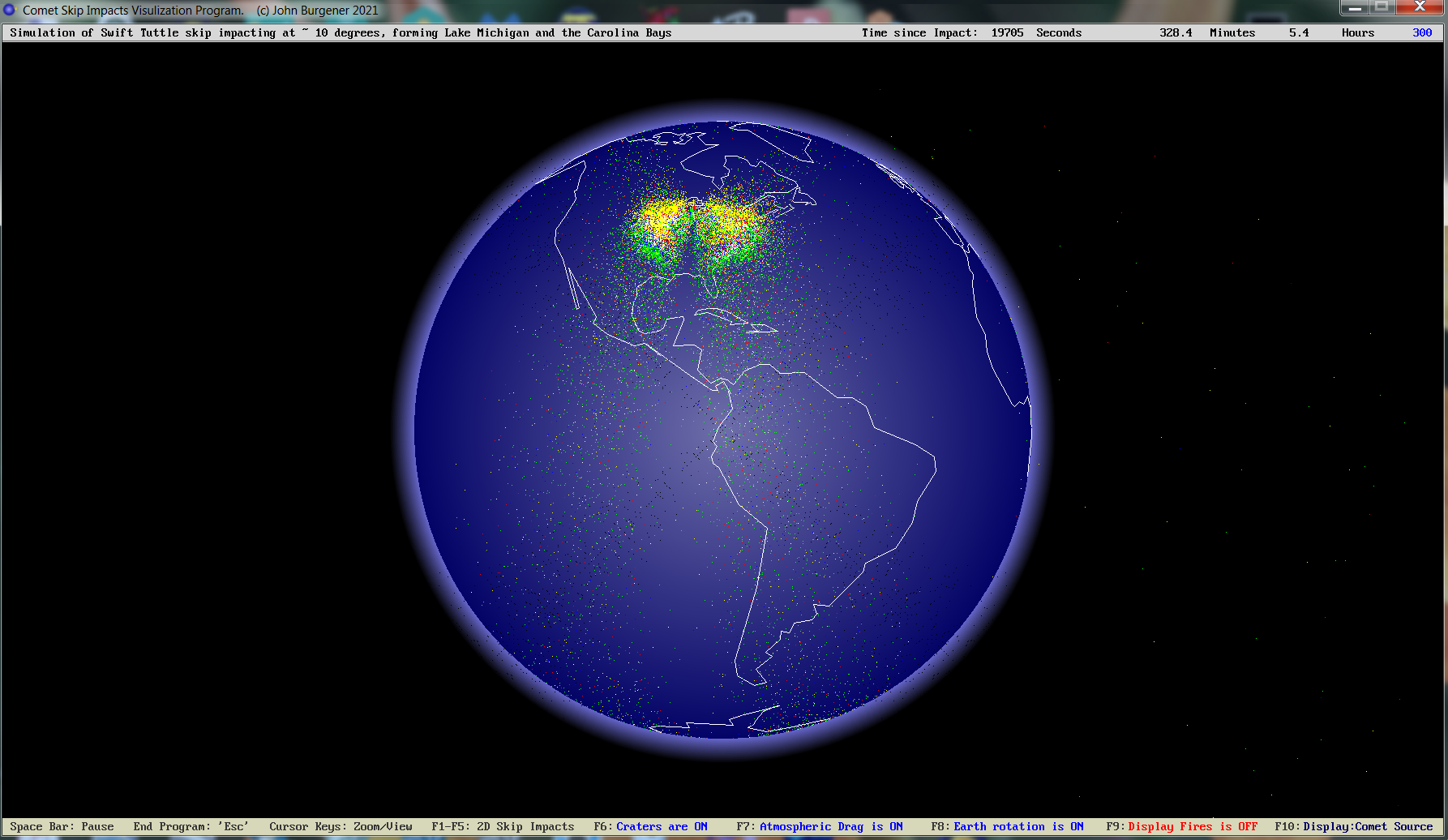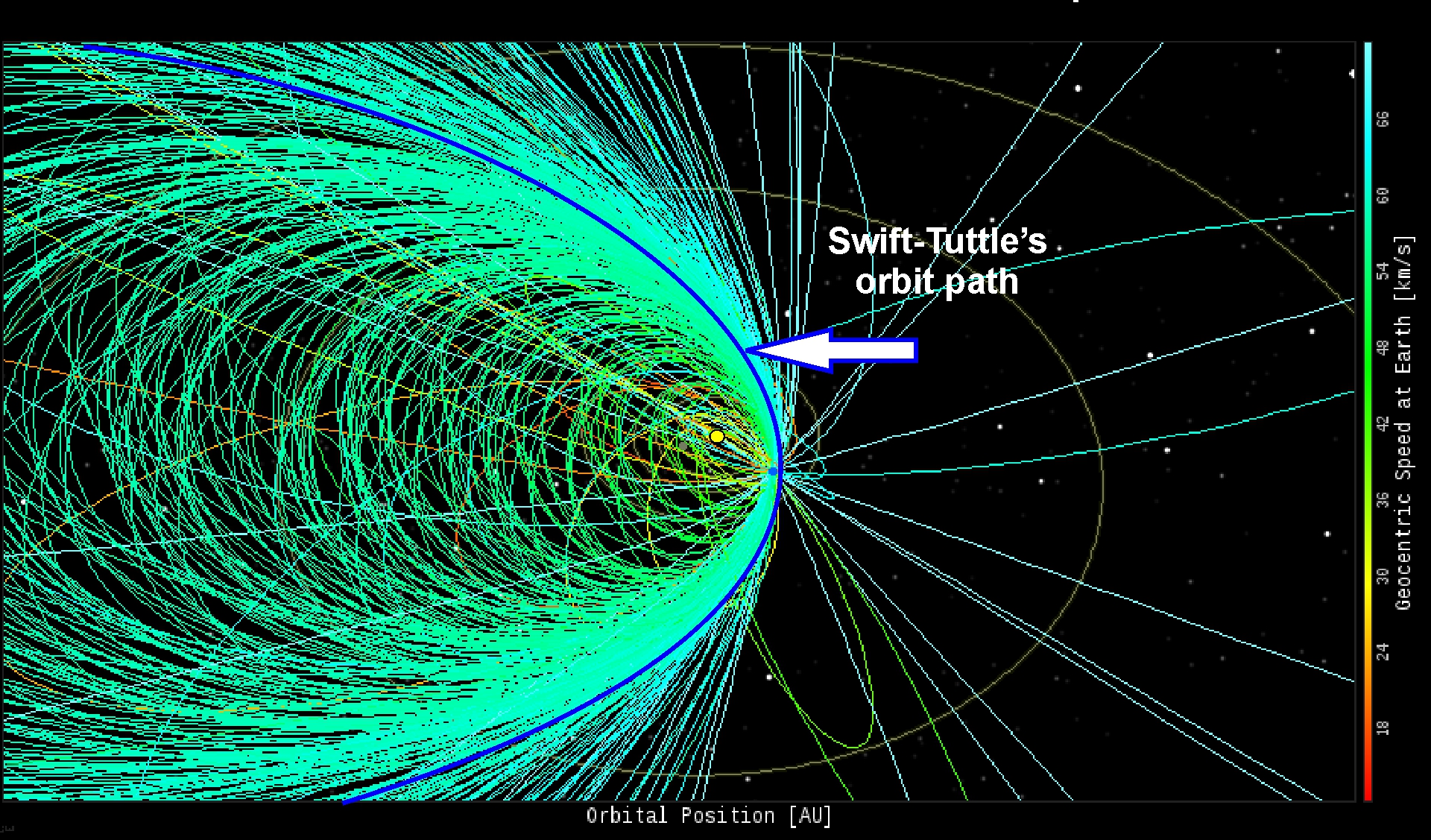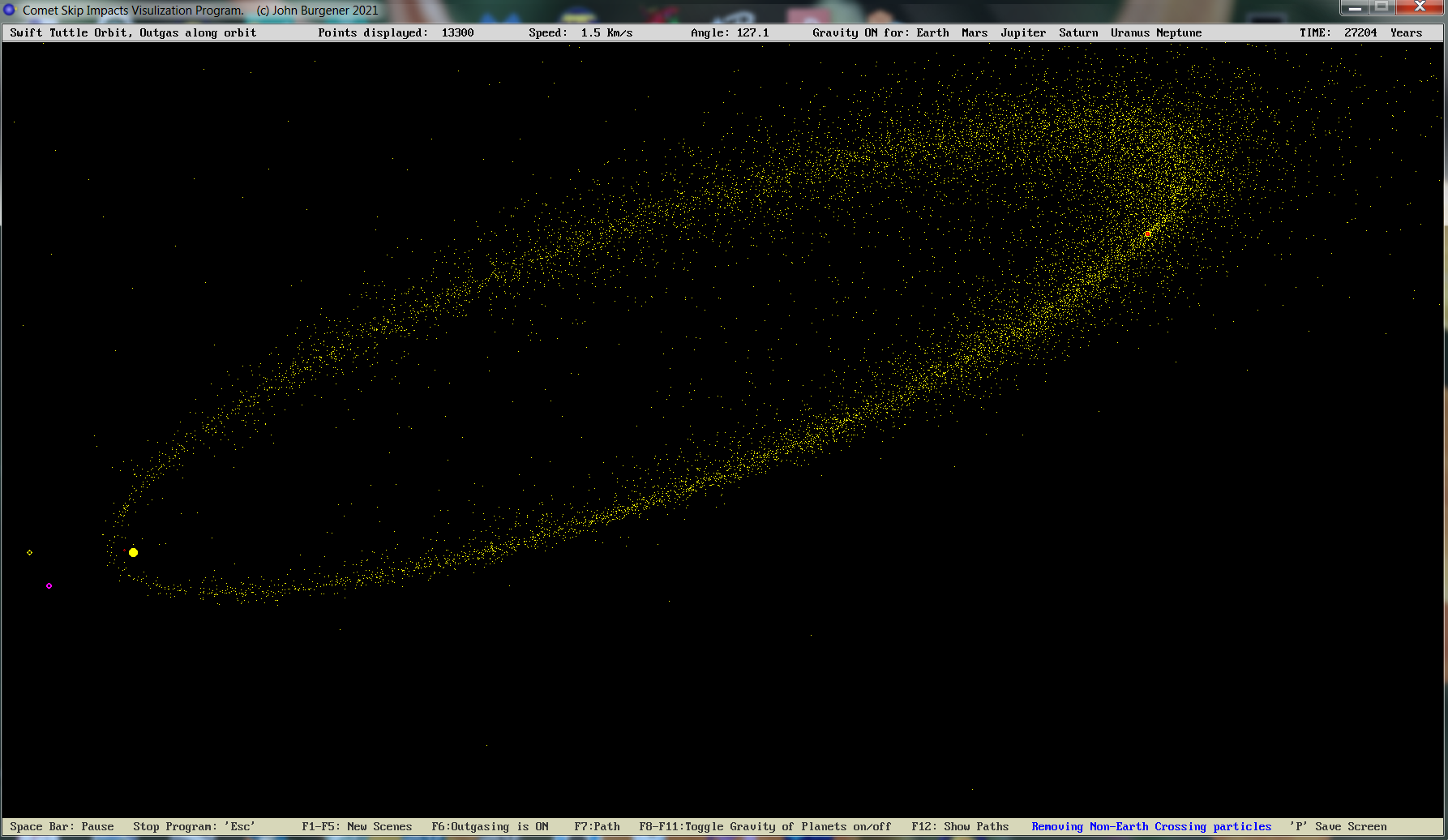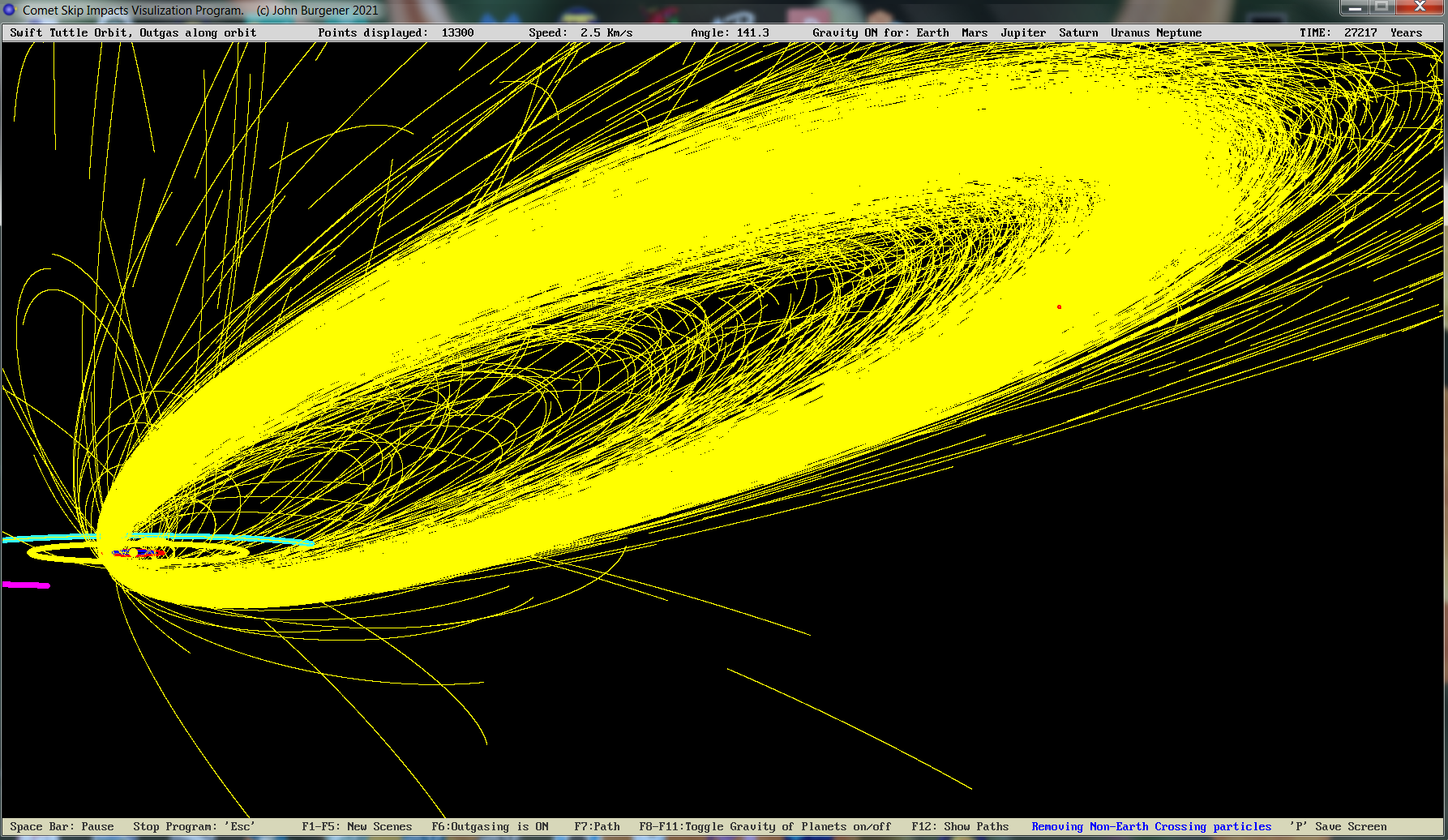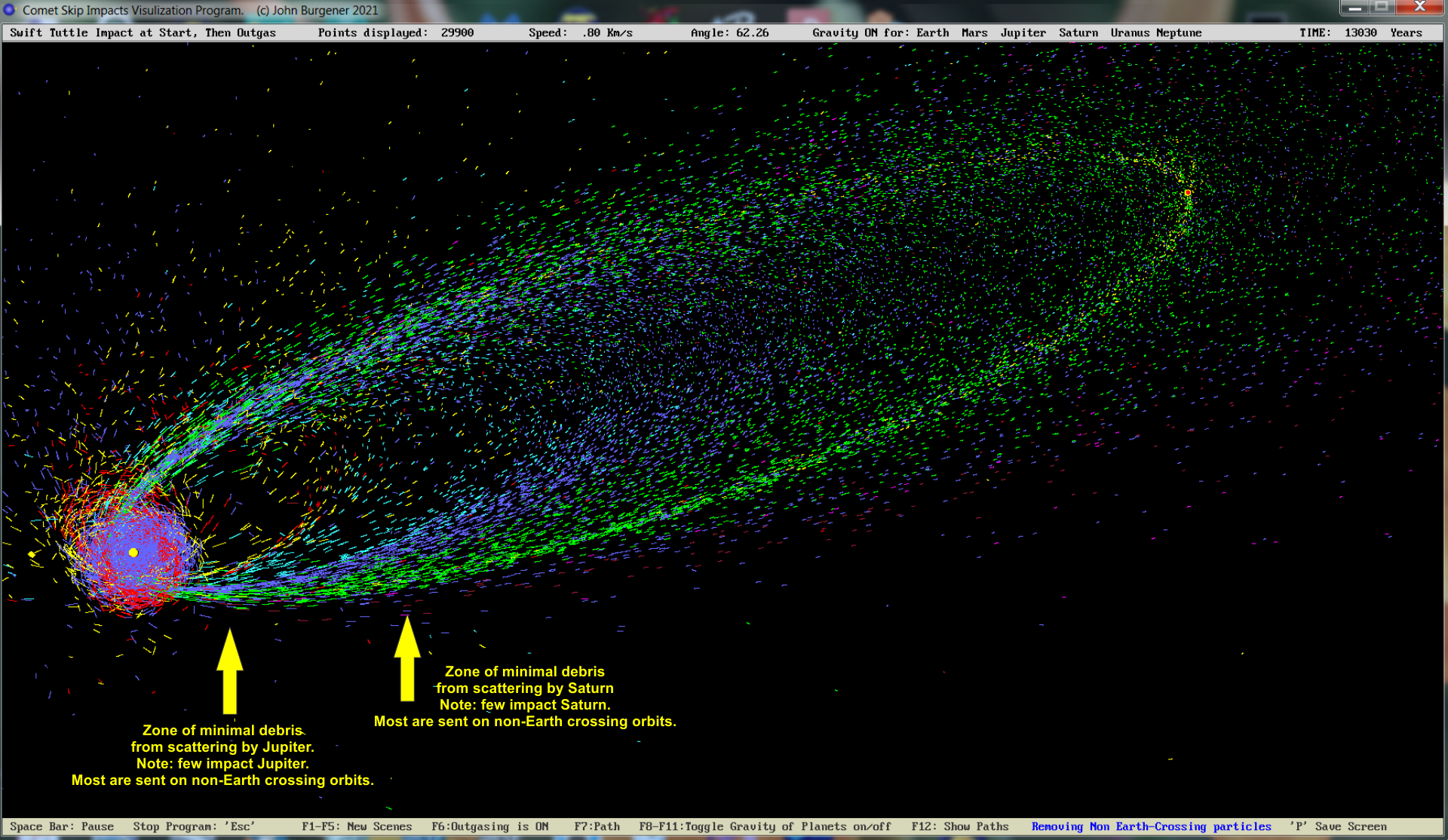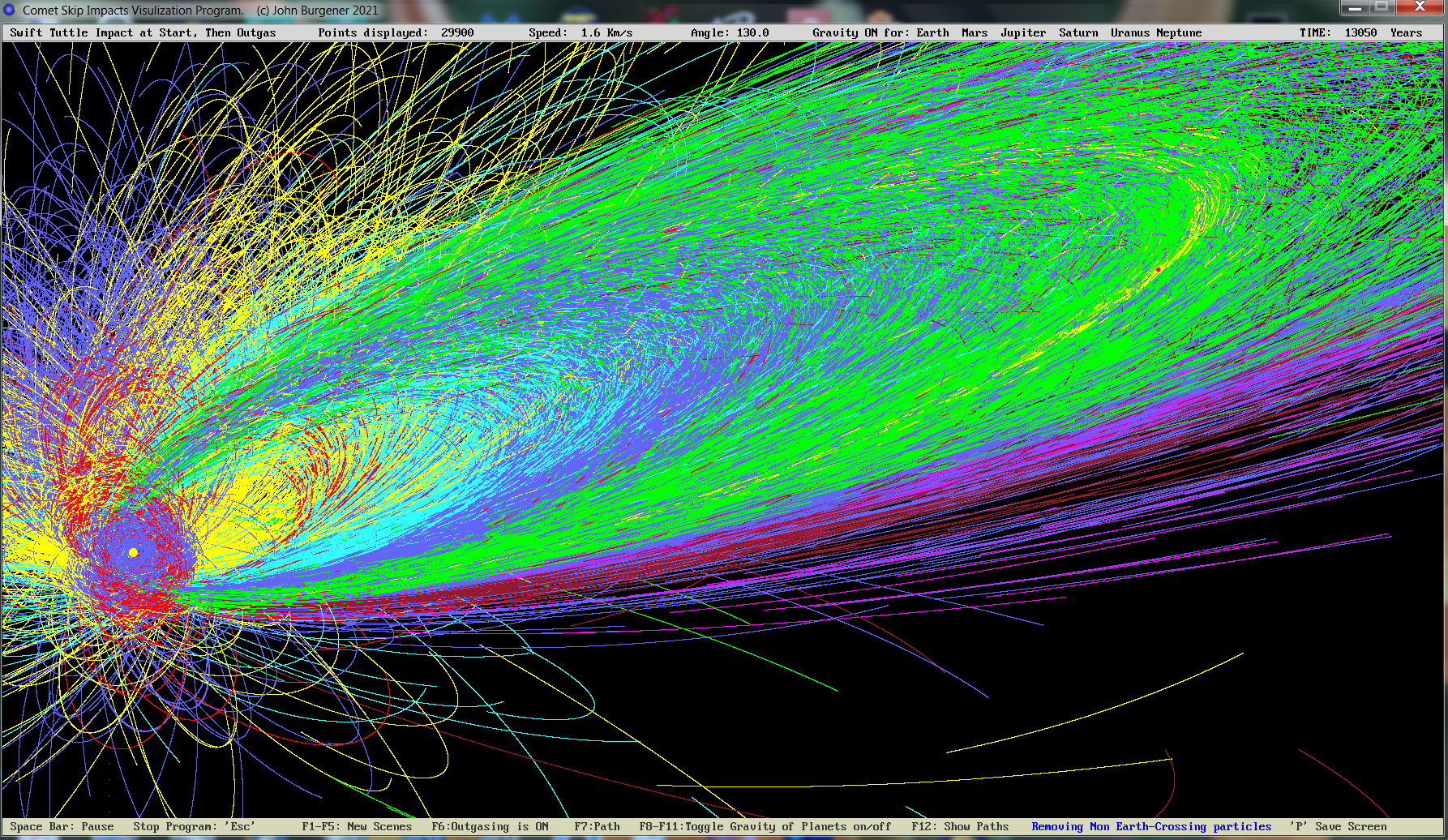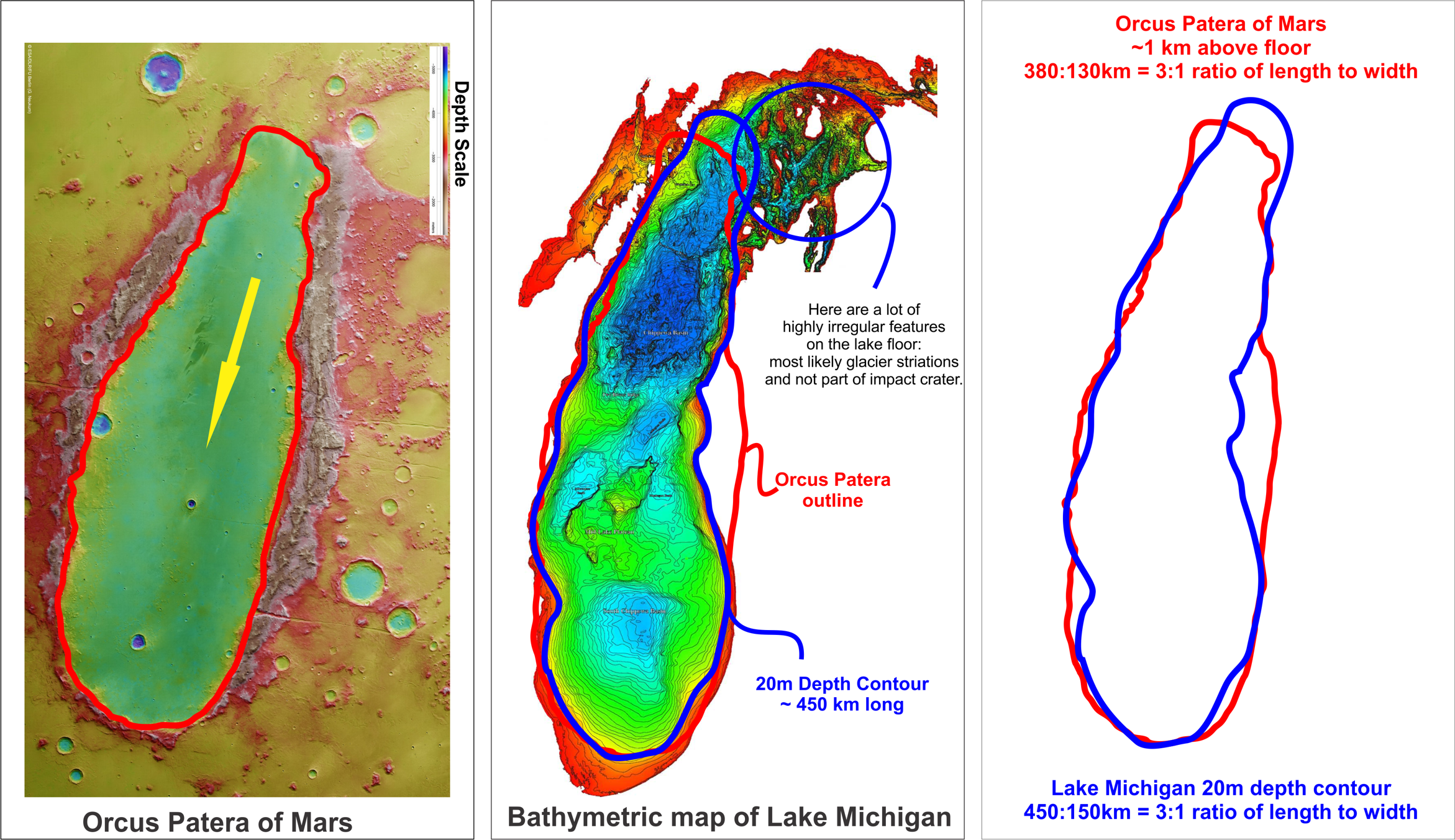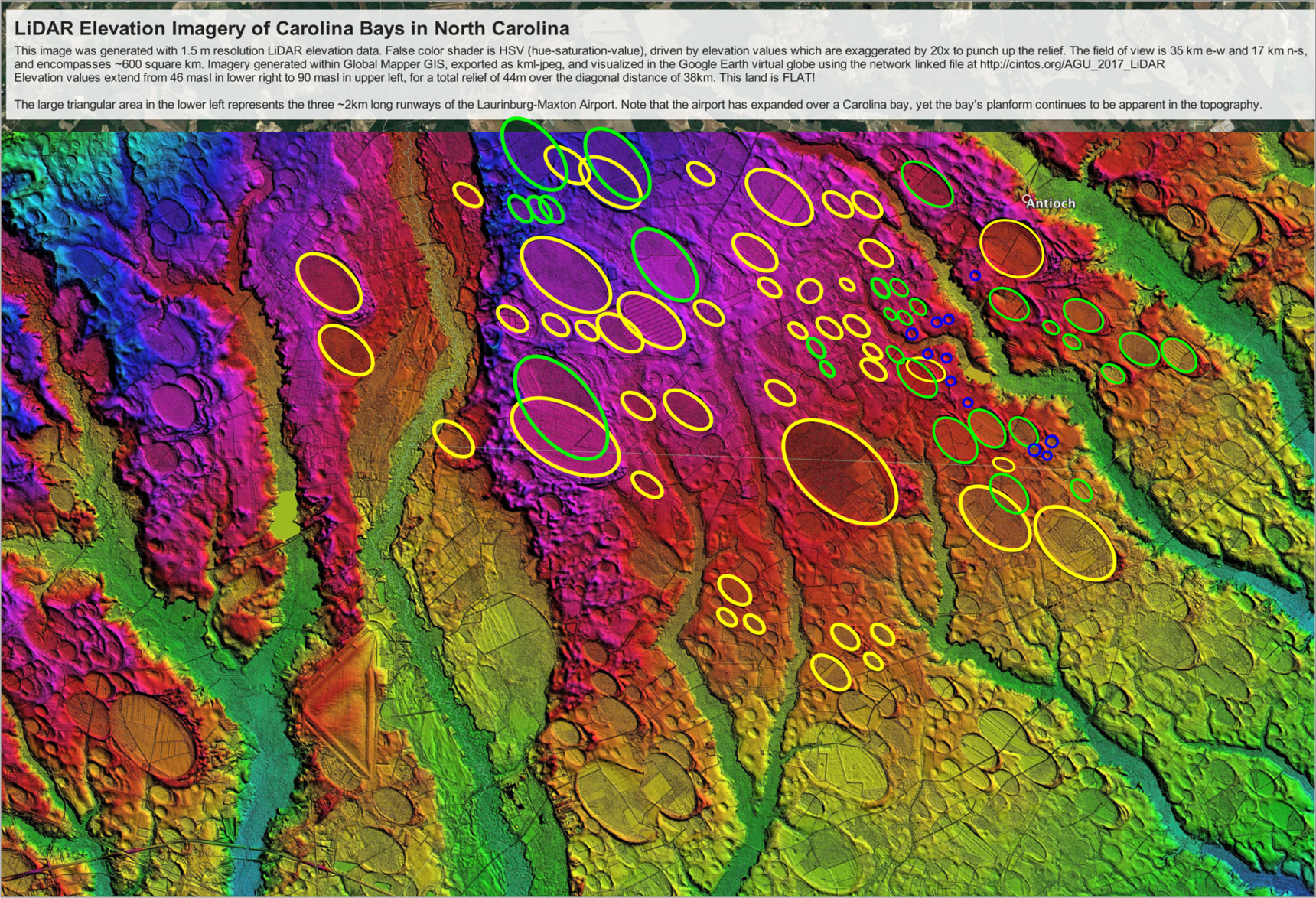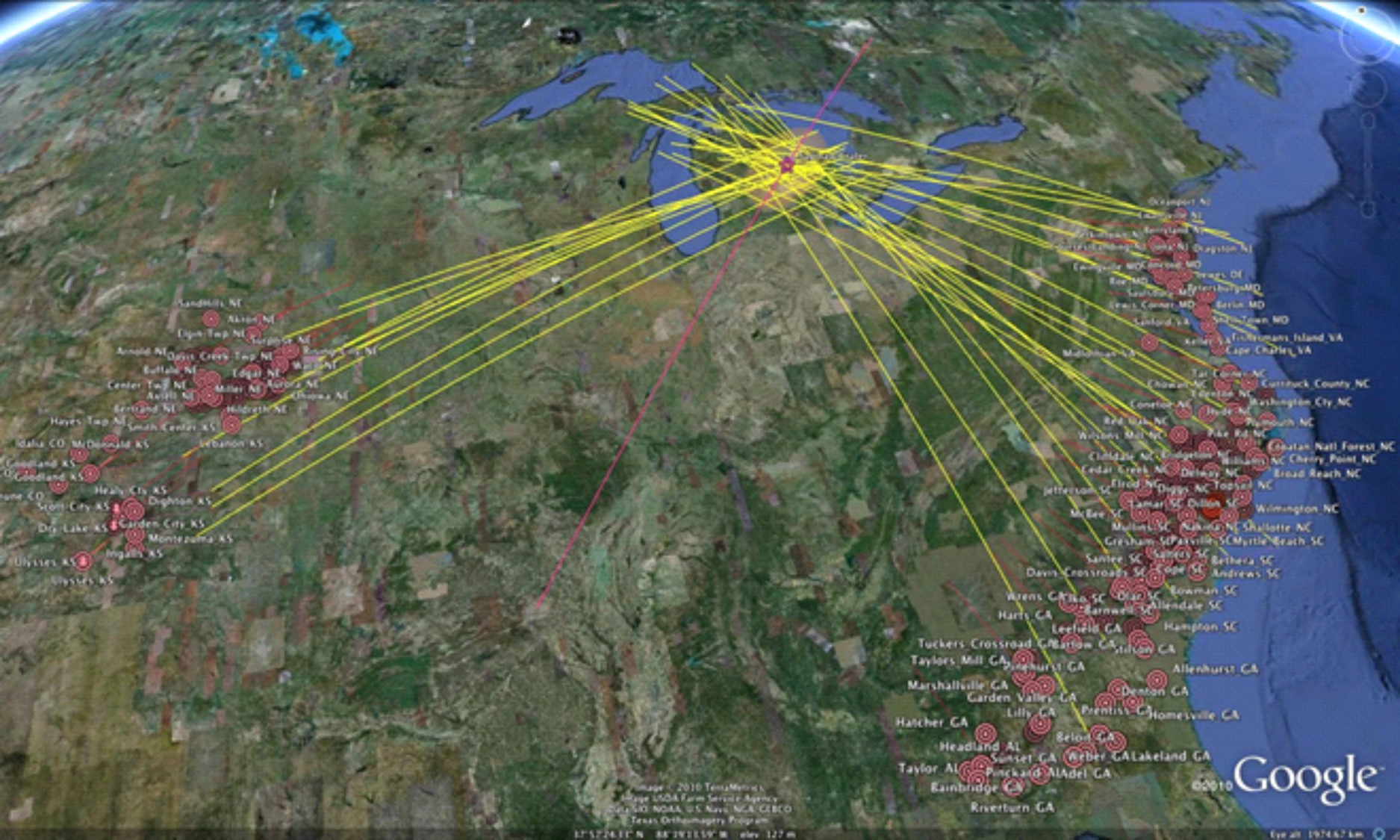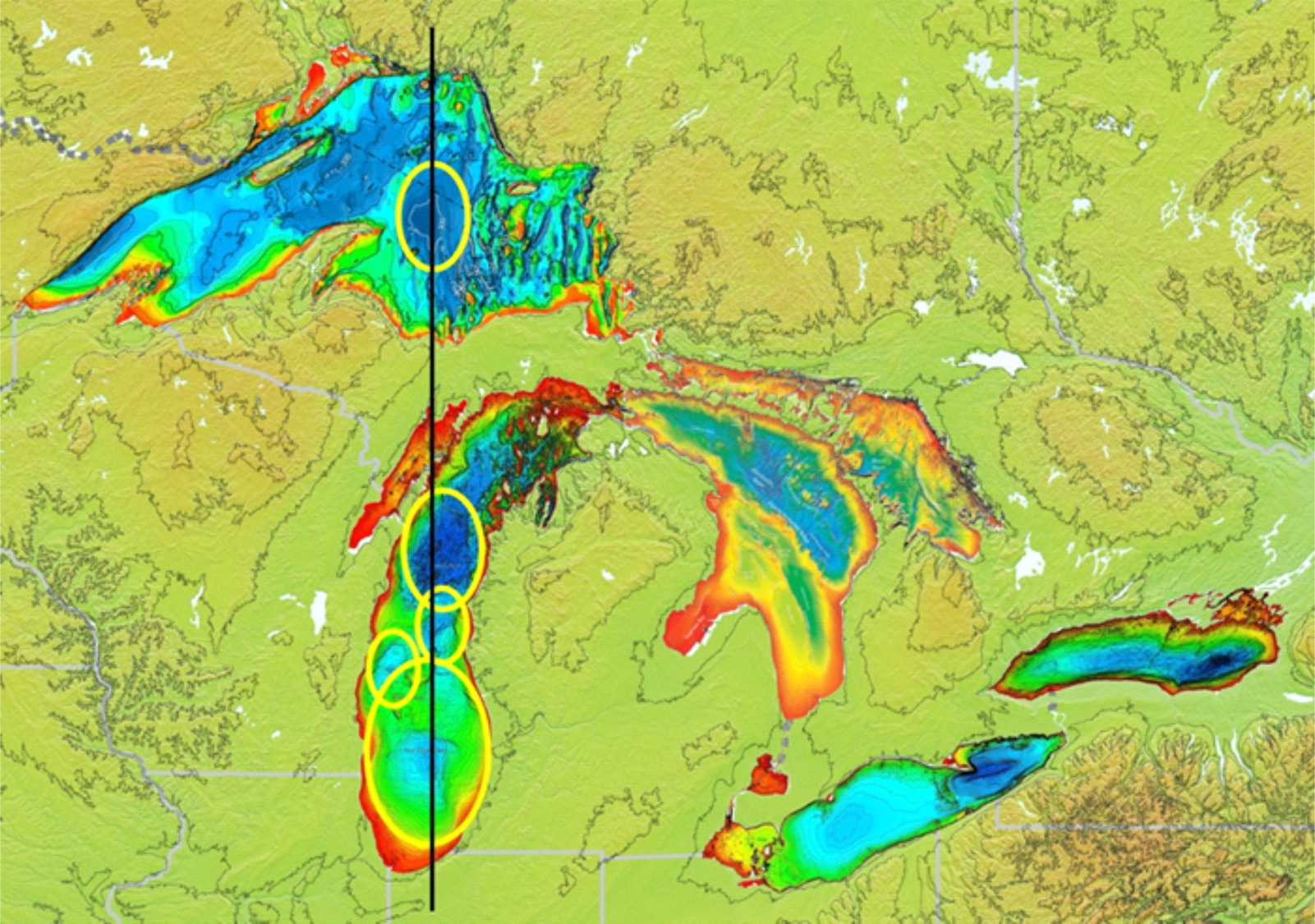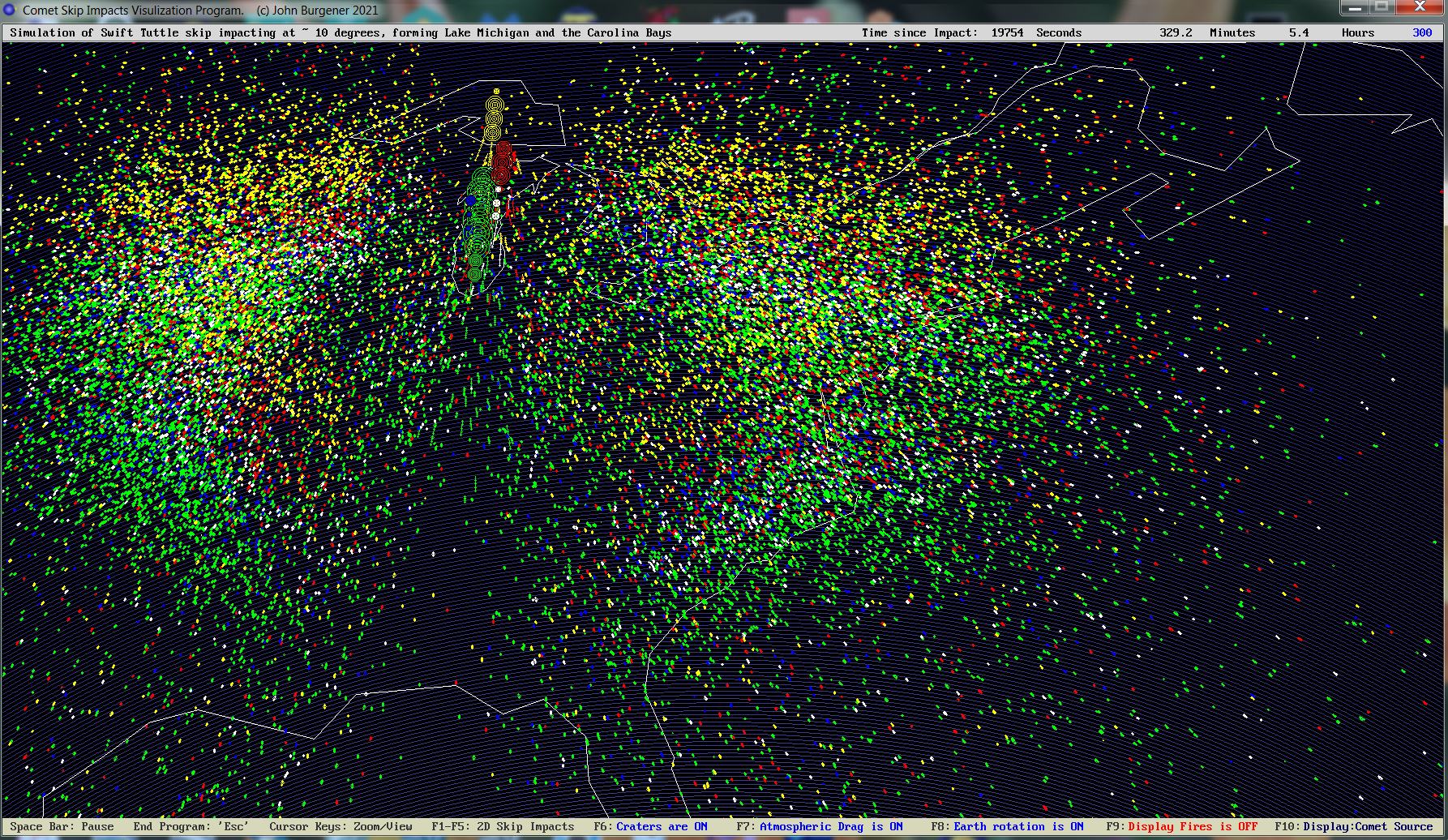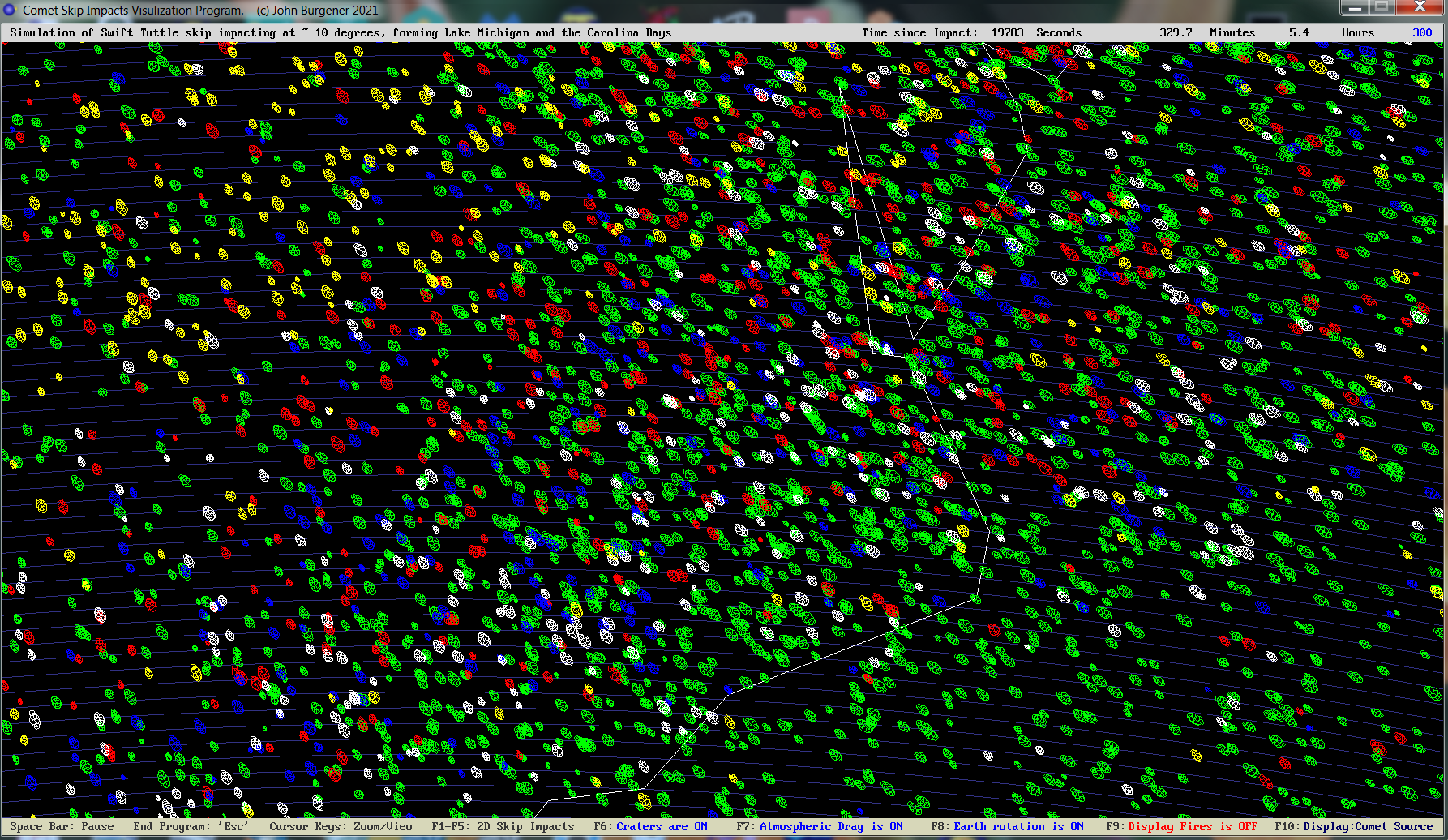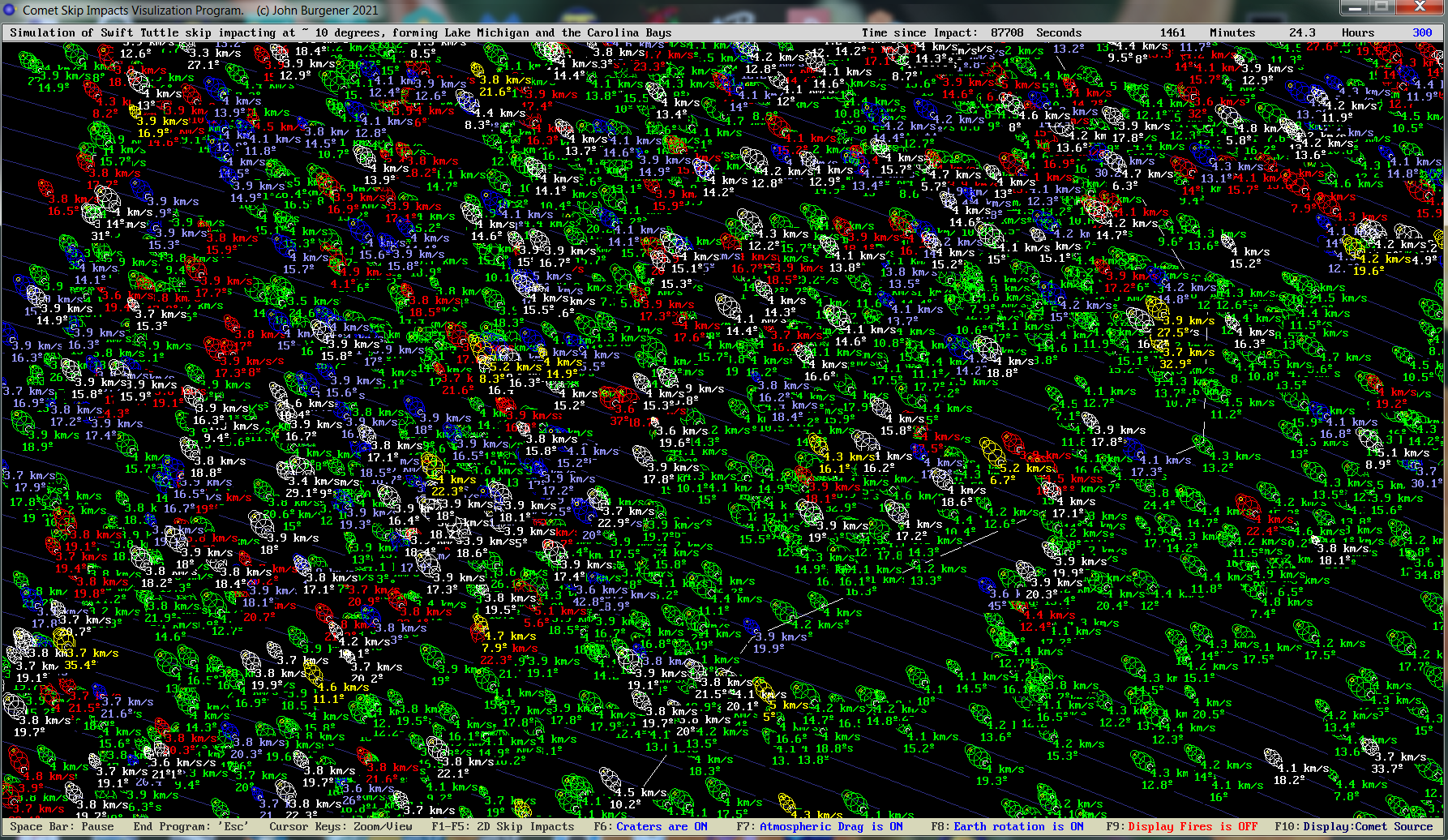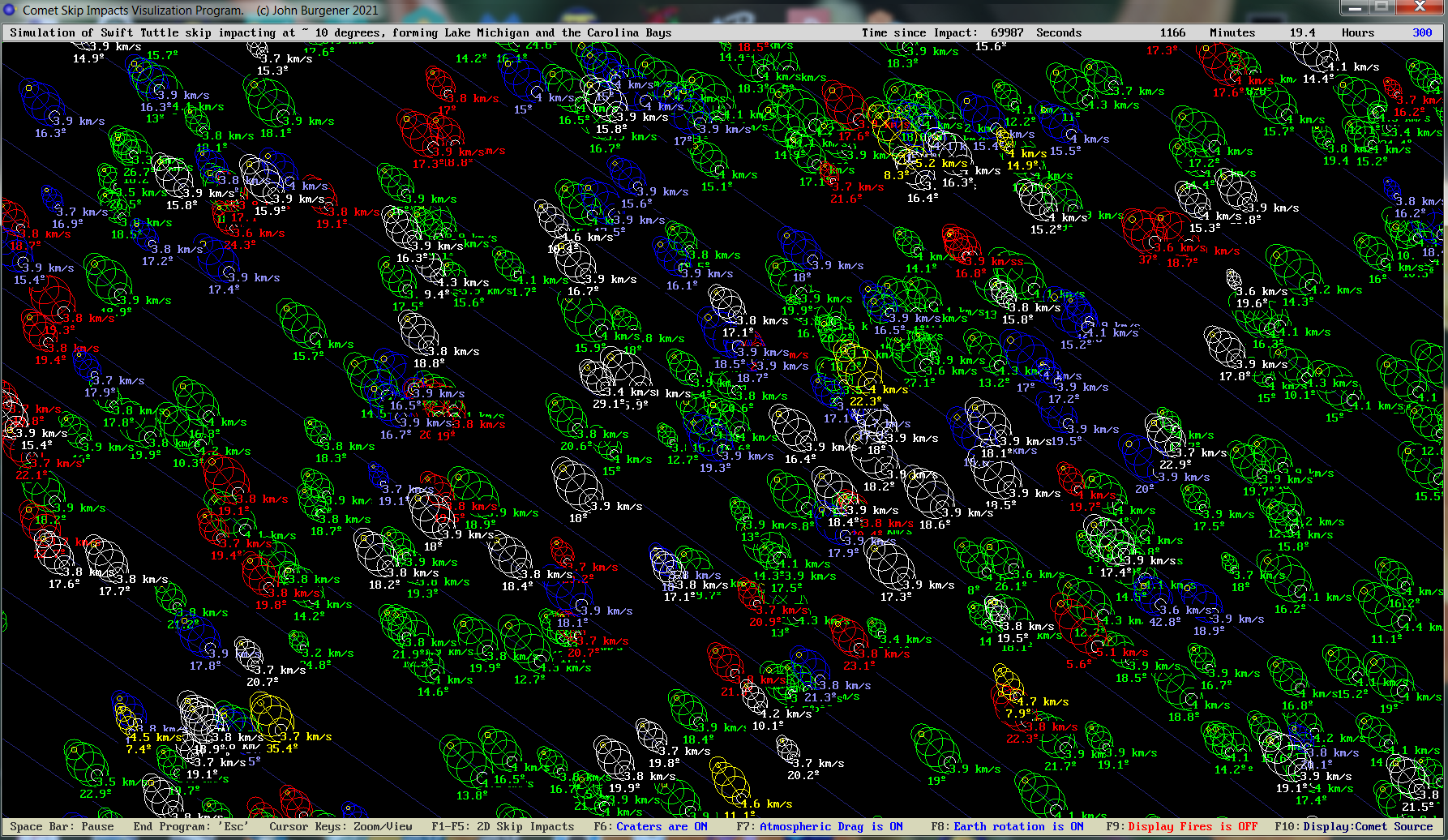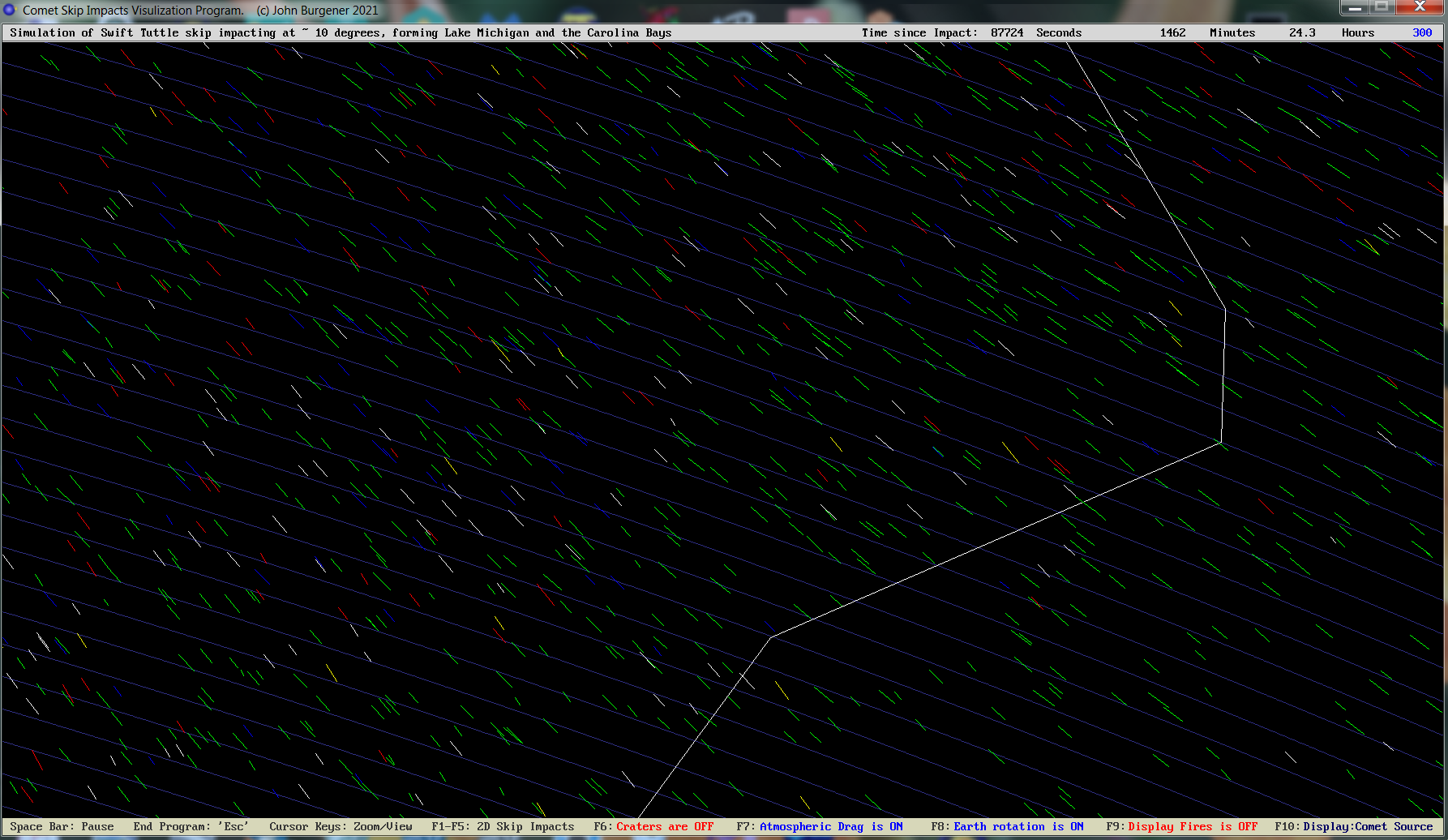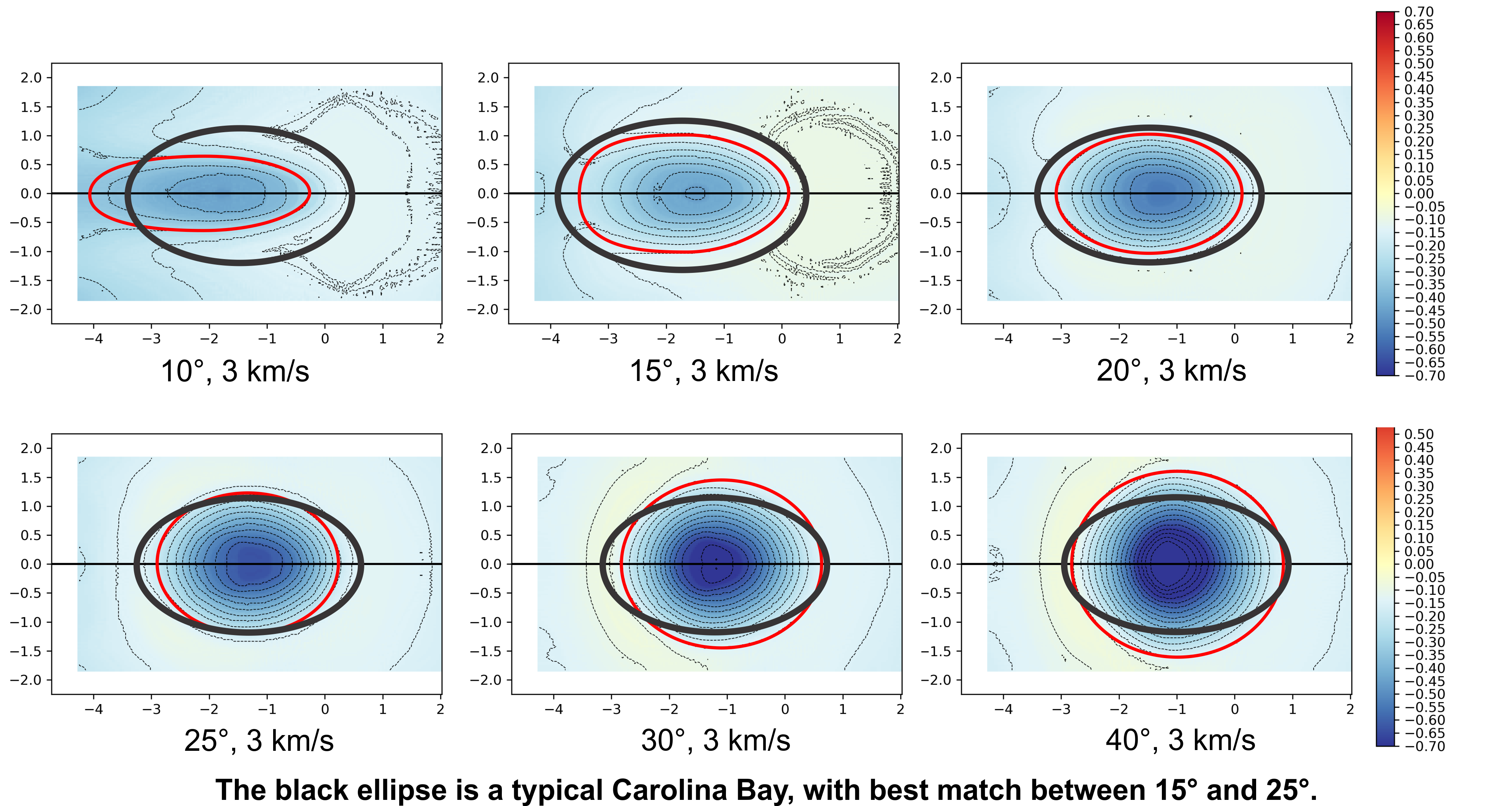The possibility of a skip impact is demonstrated by iSALE calculations. The following iSALE simulation shows that a comet CAN hit Earth and continue on its orbit. iSALE is accepted as geologically correct in calculating impact craters. However, it does not display the debris in detail and it requires days to months to simulate a complex, detailed impact.
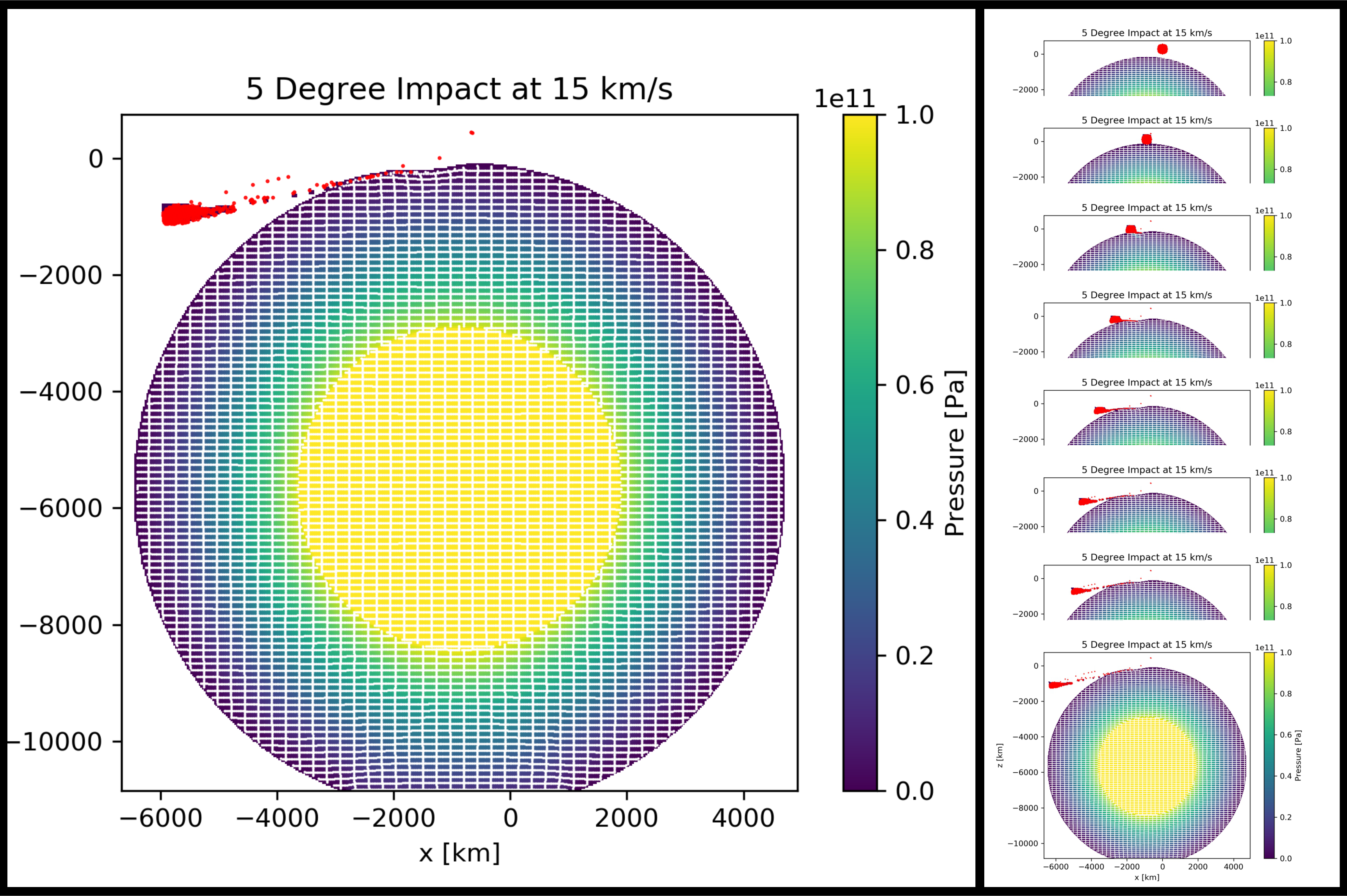
iSALE presentation of a 5 degree impact, with part of the comet continuing on and part is shattered and tossed back into space as debris, mixed with a lot of debris from Earth.
The size of comets being considered is large. At present, Swift-Tuttle is estimated to be 40 km in diameter. If it is the remnant of a skip impact, then the original comet was larger - likely in the order of 60 - 100 km in diameter. Asteroids are known to be smaller with very few in the asteroid belt over 10 km in diameter, so they are not being considered for potential skip impact events. However, it is becoming accepted that most comets come from the Kuiper Belt, and the bodies there are estimated to be 1000 times more abundant than asteroids, 100 times larger, and by the calculations of the effects of the dwarf planets on the Kuiper Belt objects (Burgener, 2019), they are often pushed out of their orbits into Earth Crossing orbits.
The SkipImpact program is not intended to show cratering but instead is focused on the debris and secondary craters, and it runs in real time or very much faster, showing the impact events in minutes instead of weeks. It is a tool designed to help evaluate and simulate the debris produced in such an impact and any secondary craters from it.

The final distribution of hot debris falling from space and landing on Earth shows that a skip impact from Swift Tuttle forming Lake Michigan would also cause massive fires in several parts of Earth but not other areas. Australia and Africa have very little debris land there. It is recognized that most large animals in North America, South America and Eurasia went extinct about the same time as the end of the ice age, or about 12,700 years ago, but the large animals of Africa were not effected. The larger pieces of debris falling from space at 6+ km/s would have triggered fires where they landed, causing massive fires across the continents that had the extinctions occur. The SkipImpact program can highlight the debris falling at speeds above 6 km/s to more easily see the areas that would have fires set by the falling debris.
Conclusion: The SkipImpact 3D software indicates that a skip impact by Comet Swift Tuttle would fit as the source of the Carolina Bays as secondary impacts from the impact debris, and would explain the distribution of the fireball orbits associated with the Perseid Meteor Shower. The program predicts that very low angle craters will be of unusual shapes and often not recognized due to their elongated and shallow shapes.
Acknowledgments: We gratefully acknowledge the developers of iSALE-2D, including Gareth Collins, Kai Wünnemann, Dirk Elbeshausen, Tom Davison, Boris Ivanov and Jay Melosh, and we gratefully acknowledge the developers of iSALE-3D, including Dirk Elbeshausen, Kai Wünnemann, Gareth Collins and Tom Davison.
References:
[1]. Burgener (2022) SkipImpact.exe computer program simulating comet impacts in 3D with up to 90,000 points of debris being calculated in orbit over thousands of years. Available to download from www.craters.ca
[2]: Cooke, W. (2014-2021), NASA’s All Sky Fireball Network daily charts of fireball orbits posted on www.spaceweather.com. Included fireball chart from Aug 2015: https://www.spaceweather.com/FIREBALL_PARSER/fireball_data.png?PHPSESSID=ik2r3o2g28eob2n25cpmlc49o4
[3]. Napier, W. P. (2019) "The hazard from fragmenting comets", MNRAS 488, 1822-1827 (2019). doi: 10.1093/mnras/stzl 769
[4] Davias, M., Harris, T. (2019) “An Incomprehensible Cosmic Impact at the mid Pleistocene Transition, Searching for the Missing Crater using Australasian Tektite Suborbital Analysis and Carolina Bay’s Major Axes Triangulation”; GSA Annual Meeting in Phoenix, Arizona, USA.
DOI: 10.1130/abs/2019AM-332326
[5] Burgener, J. “The Influence of Dwarf Planets on the Stability of Objects in the Kuiper Belt”, 50th Lunar and Planetary Science Conference 2019, Presentation 3163.
|
